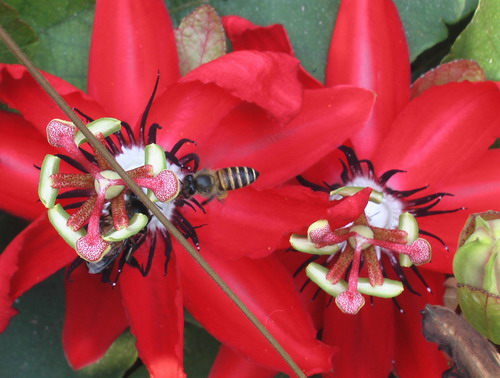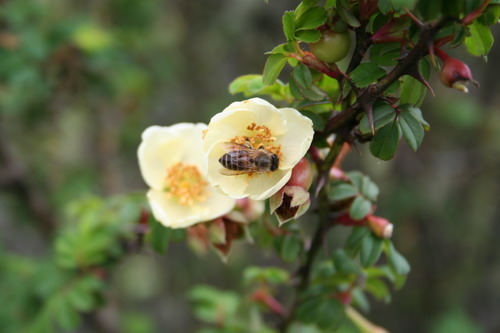Xenobiotics, foreign substances that include man-made chemicals such as pesticides, can negatively impact bee foraging and pollination, reducing colony fitness and contributing to bee population declines. Olfactory learning plays a key role in the ability of foragers to return to rewarding food, and thus learning impairment may reduce colony fitness and health. However, no studies have tested if neonicotinoids can impair associative learning in Apis cerana, an important pollinator of crops and native plants in eastern, south and southeastern Asia.
Prof. TAN Ken of Xishuangbanna Tropical Botanical Garden (XTBG) and his colleagues of Yunnan Agricultural University used six Apis cerana colonies (three colonies per experiment) to study the effects of imidacloprid, a neonicotinoid pesticide, on a native honey bee species, A. cerana. They tested the sublethal effects of imidacloprid on olfactory learning when bees were exposed as adults or as larvae and also tested the effects of imidacloprid treatment on successful larval development (cell capping) and survival to adulthood.
The study showed that learning impairment can affect adults and bees exposed as larvae. The adult bees reduced olfactory learning acquisition after ingesting a single imidacloprid dose as low as 0.1 ng/bee, which was 1.6 fold higher in control bees. Bees exposed as adults continued to have impaired longer-term learning retention (1.3-1.8 fold higher in control bees), and both groups showing the same rates of memory extinction. Longer-term learning (1-17 hours after the last learning trial) was also impaired. The olfactory learning of bees exposed as larvae to imidacloprid (0.24 ng/bee) has been harmed, although the dose did not reduce survival to adulthood. Control bees exhibited 2.5 and 4.8 fold better short-term learning acquisition, while longer-term learning was not affected.
The results support research suggesting that A. cerana may be more sensitive to pesticides than A. mellifera. Adult bees given 0.12 ng/bee did not impair olfactory learning in A. mellifera, but a 0.1 ng/bee doses significantly reduced olfactory learning in A. cerana.
The study entitled “A neonicotinoid impairs olfactory learning in Asian honey bees (Apis cerana) exposed as larvae or as adults” has been published in Scientific Reports.

A honey bee foraging passion flower (Image by TAN Ken)

A honey bee foraging rose (Image by TAN Ken)


